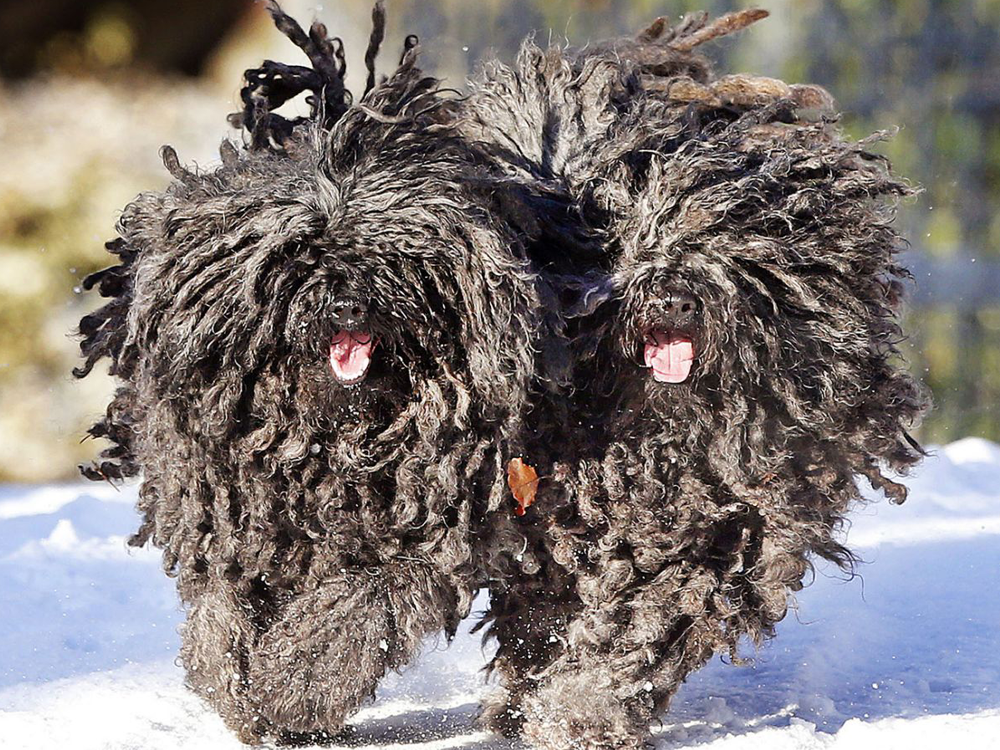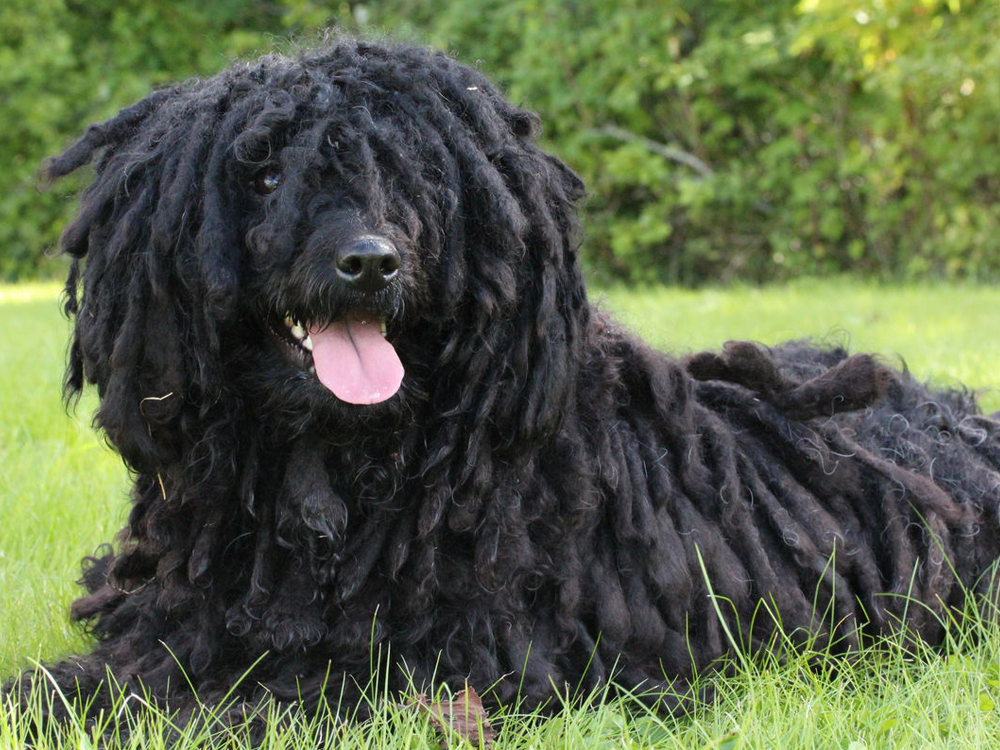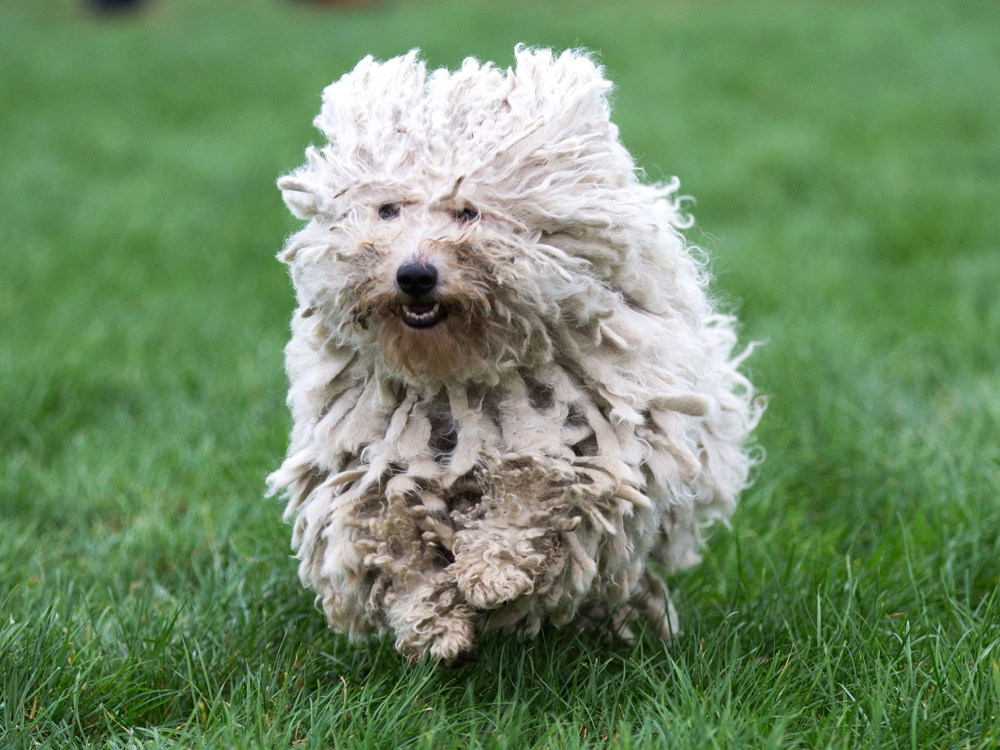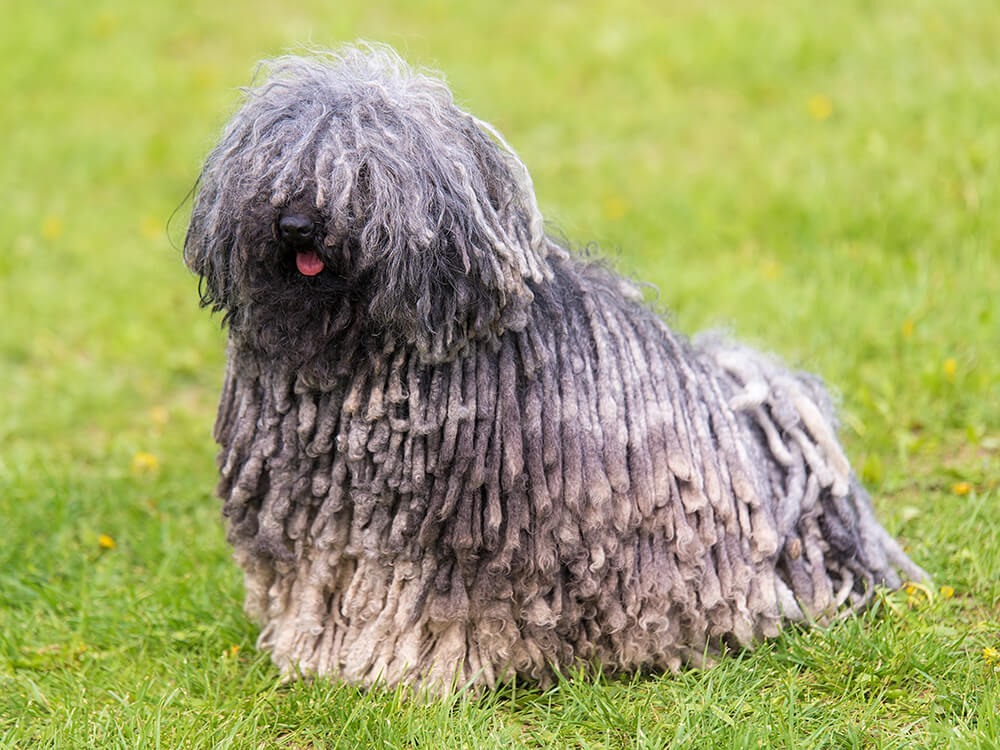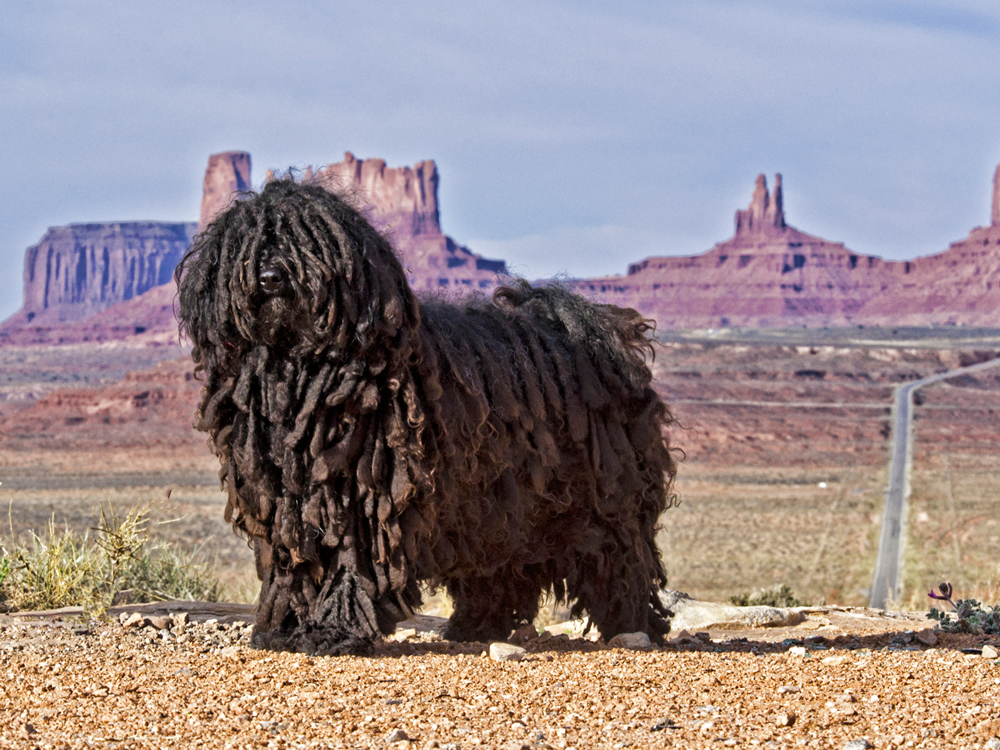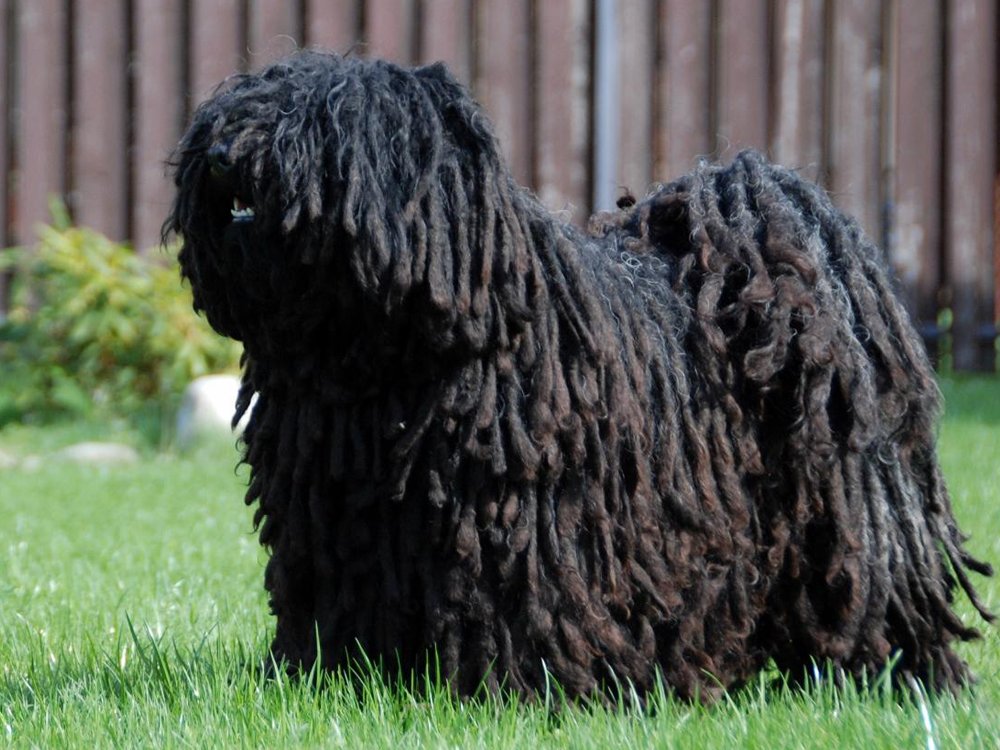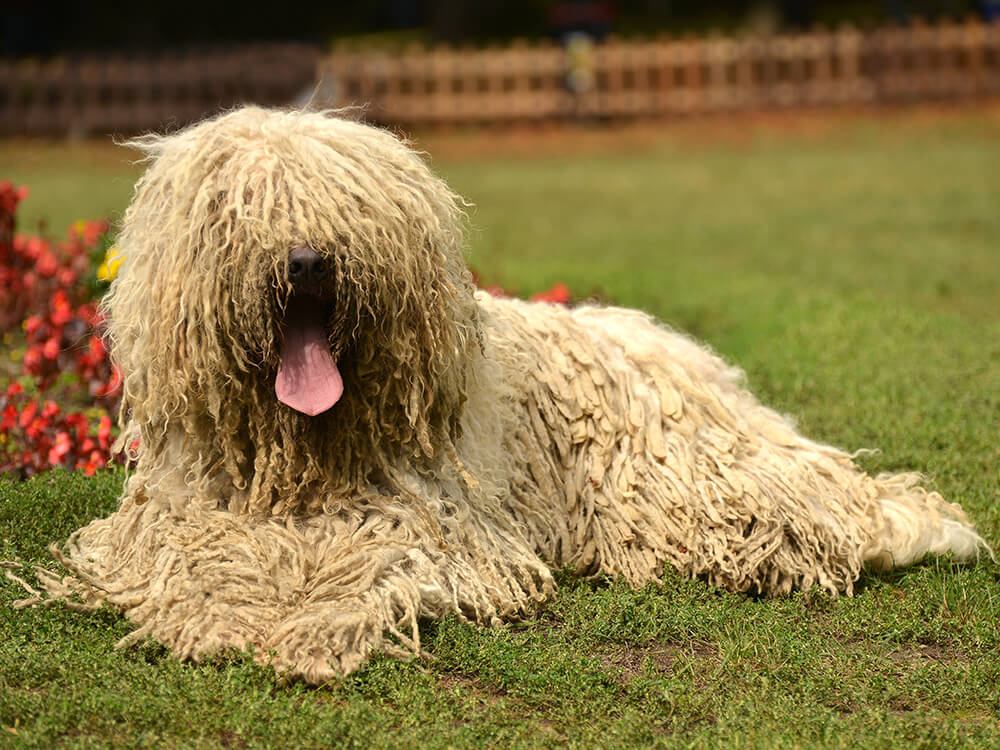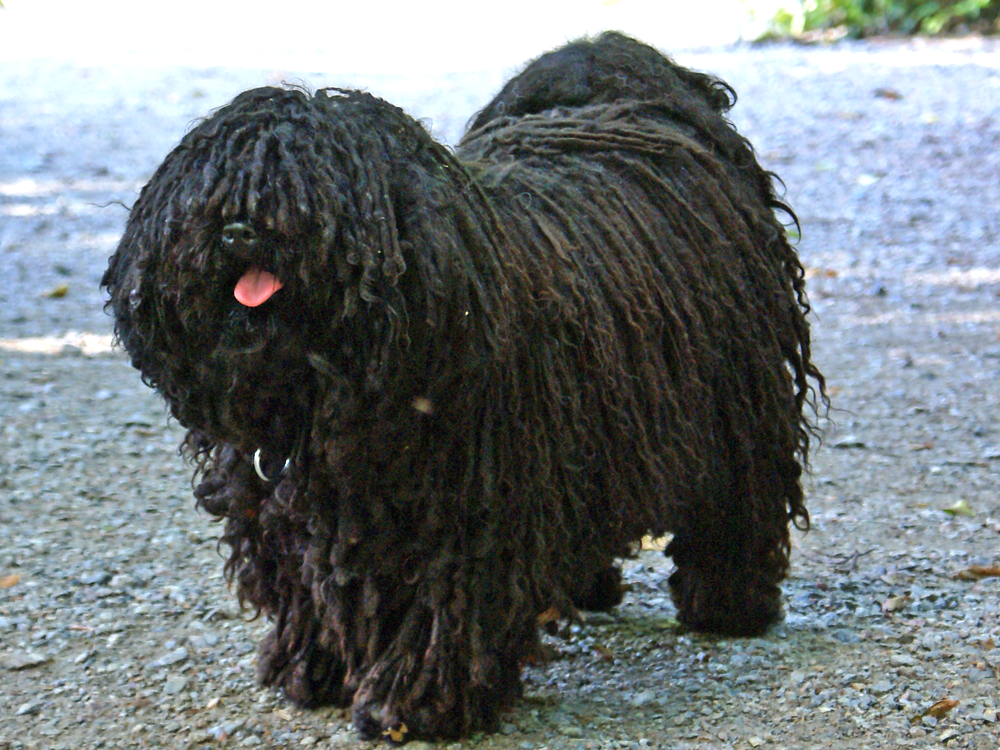
Hungarian Puli Breed Pictures
Vital Breed Stats
| Height: | 41 - 46 cm M | 35 - 41 cm F |
| Weight: | 11 - 16 kg M | 8 - 14 kg F |
| Breed Group: | Hound Dog Group |
| Life Expectancy: | 10 - 13 years |
| KC Registered: | No |
Breed Characteristics
| Size: |  |
| Grooming: |  |
| Exercise Level: |  |
| Trainability: |  |
| Barking Level: |  |
| Good with Children: |  |
| Good with other pets: |  |
| Affectionate: |  |
| Protective: |  |
| Cost to Keep: |  |
Give a thumbs up if you love the Hungarian Puli

0
More About the Breed
History
The Hungarian Puli, as the name suggests, hails from Hungary. It is an ancient sheepdog whose actual origins remain a mystery. Its ancestors are believed to have existed 6,000 years ago. Others claim that the Magyars introduced similar-looking dogs to Hungary in the 9th century that were prized herding and guard dogs. There is also a theory that this type of dogs originated in Asia before it reached other parts of the world.
When it arrived in Hungary, the Puli herded livestock through difficult terrains, usually working alongside the much larger livestock guardian dog called the Komondor. The two worked hand in hand to drive away wolves and other predators. The breed’s thick, corded coat provided protection from the harsh weather and predator attacks.
The Puli remained virtually true to its original features as Hungarian shepherds strived to protect their dogs from external influence. It also remains an esteemed breed in its hometown that shepherds would willingly pay a year’s worth of wages to own one. It was only recently that this breed became popular in the other parts of the world as a loyal companion and it still remains rare outside Hungary. In fact, people who want to own a puppy will have to wait for a while as the waiting list is quite long. The Hungarian Puli is registered with The Kennel Club under the Pastoral group.
Appearance
The Hungarian Puli is a dog that is hard to miss thanks to its ultra-thick corded coat. Weighing 22 to 29 pounds and standing 37 to 44 centimetres at the withers, this mop-like dog is actually well-muscled and sturdy. Hair fully covers its dark brown eyes from view, which have a lively expression. It has medium pendant, v-shaped ears, large black nose, black tight lips, and a perfect scissor bite.
Obviously, the most interesting feature of Puli is their distinctive coat, which is considered hypoallergenic and non-shedding. According to KC standards, the accepted colours are:
- Black with or without intermingling of white hairs
- Black with rusty or grey shading.
- Grey in various shades.
- Fawn, preferably with a distinct black mask. All shades of fawn.
- Grey or fawn, which may have an intermingling of black or white hairs with black or grey tips on tail and ears.
- White without any yellow markings.
Grooming
Grooming will be a challenging task as this type of coat is a magnet for debris, which needs to be removed straight away to lessen chances of matting. It is specifically high maintenance during the first 6 to 9 months when cords are forming. Some coats are self-cording but humans usually separate them when the coat texture changes from puppy fluff to adult coat at one year of age. The coat becomes fully mature at around four years of age. Corded coats are managed by hand and should never be brushed. The first step in cording is dampening the coat with water, followed by individually separating and twirling the cords. While KC standards require corded coats, some owners prefer the coats of their Pulik uncorded and keep them tidy by regular brushing to remove tangles and matts.
The Puli should only be bathed when needed like when it lies and plays in mud or when the coat has collected too much dirt, food, faeces, urine, etc. Surprisingly, it doesn’t have that doggy smell. Bathing is a tedious task as chords need to be soaked in water, carefully shampooed and squeezed dry. Air-drying can actually take two days and blow-drying is a big no-no as the breed overheats.
Puli are prone to ear infections, which are difficult to clear up so it is better to prevent them altogether. Ears need to be frequently cleaned and hairs inside need to be removed for air to circulate efficiently. Also make sure your dog’s teeth are brushed regularly and its nails are trimmed. During a trip to the vet, ask for assistance in inspecting its skin to avoid bumps and parasites.
Temperament
Intelligence
Nutrition
- Senior and less active: up to 630 calories daily
- Typical adults: up to 700 calories daily
- Physically active/working dogs: up to 790 calories daily
Feeding
Health
Exercise
Cost of Ownership
If you are looking to own a Hungarian Puli, you will have to set aside over £600 to £900 and as previously mentioned, be on a long waiting list for a well-bred pedigree puppy. Insuring it will cost around £20 for basic coverage and £40 for lifetime. However, the price can go higher if you choose a more comprehensive premium.
Initial costs to buy basic equipment like bed, food and dish bowls, toys, and others will be around £200. When it comes to food and treat costs, you need to set aside about £50 per month. Routine veterinary check-ups and preventive care will cost you as high as £1,000 within a year especially when you decide to neuter or spay your Puli.
Is a Hungarian Puli Right for You?
- The Hungarian Puli is loyal, loving and affectionate. It is also a good watchdog.
- The breed is a healthy and robust dog that doesn’t suffer from too many illnesses.
- It is good choice for new owners as long as they are up for its demanding grooming needs
- The Puli is a medium dog that is recognised by The Kennel Club.
- It has low exercise requirements.







